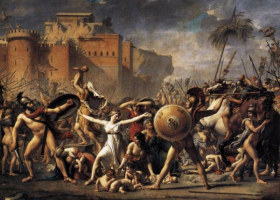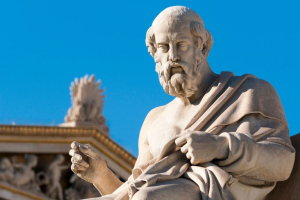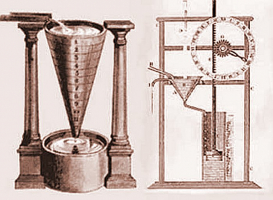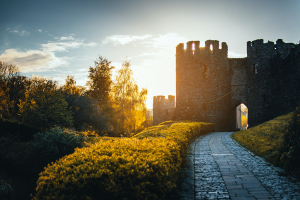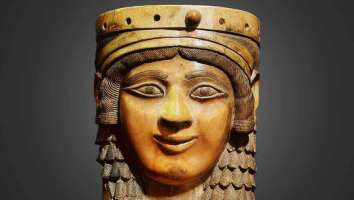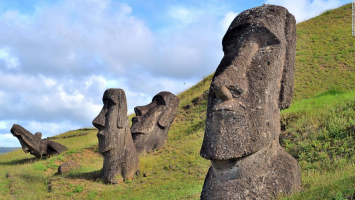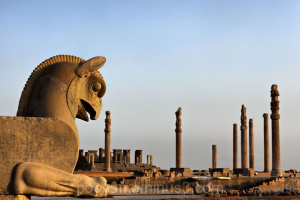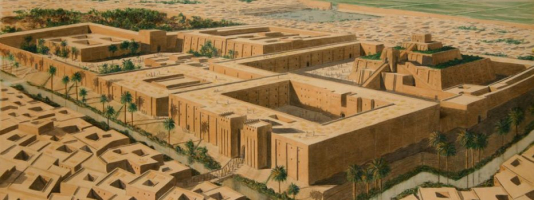Top 10 Misconceptions About Ancient Greece
To portray the epic tale of this interesting time in history, Toplist has recalled tales of battle, democracy, gods, Spartans, Trojans, and all things Greek. ... read more...However, mythology and stories of gods and wondrous creatures served as the foundation for Greece. It has permeated every aspect of Greek history, in fact. As a result, history of Ancient Greece has been exaggerated or altered significantly from fact. It is evitable to separate fact from fiction and understand some persistent myths if people are to comprehend this fabled period in human history. Here are some Misconceptions About Ancient Greece.
-
Democracy is frequently attributed to the Ancient Greeks. This is true in a way. Our view of Greek democracy, though, appears to elevate a less spectacular form of government than the democracies we are familiar with today. Cleisthenes, the Athenian ruler, offered the new demokratia system to the Greek populace in 507 BC, marking the beginning of democracy in that country.
Demokratia is a combination of the Greek words demos, which means "the people," and kratos, which means "power." This new form of "government by the people" was intended to increase peace and stability to have a system in which an unpopular administration was overthrown through elections rather than a coup or revolution.
Their democracy, though, wasn't something to be proud of. Their democracy, though, wasn't something to be proud of. Yes, it was the first of its type, and going forward, it would expand to include and represent all people. Still, it was only a small portion of the population in Ancient Greece. In Athens, only men who were free were regarded as citizens. This indicated that women were not represented, did not vote, and did not participate in politics.
We also frequently forget how the Ancient Greek government operated. Each year, 500 names were selected from among all Athenians. For a full year, the 500 people would work for their country. This indicated that their system of government was direct democracy, which is not comparable to modern democracies. Rather, representative democracies make up the majority of modern democracies.
For all the credit we give the Ancient Greeks for developing democracy, we frequently ignore any flaws in their own invention. While some of these faults have been addressed throughout the years, others persist today.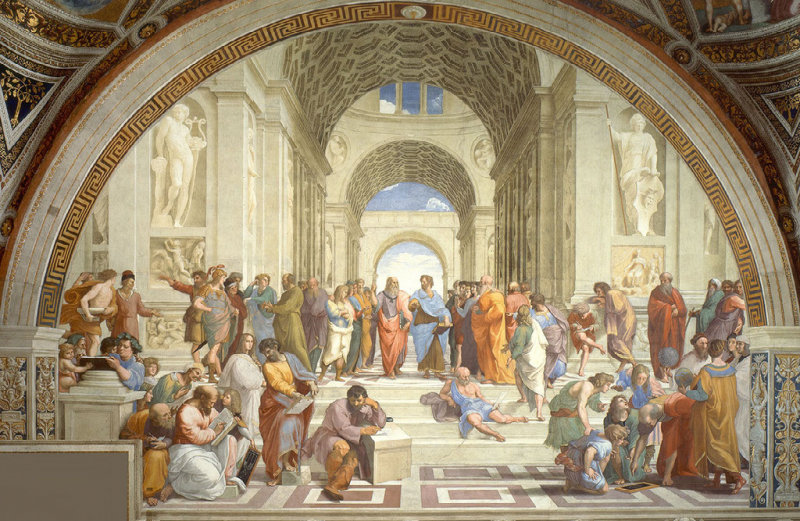
https://spark.adobe.com/ 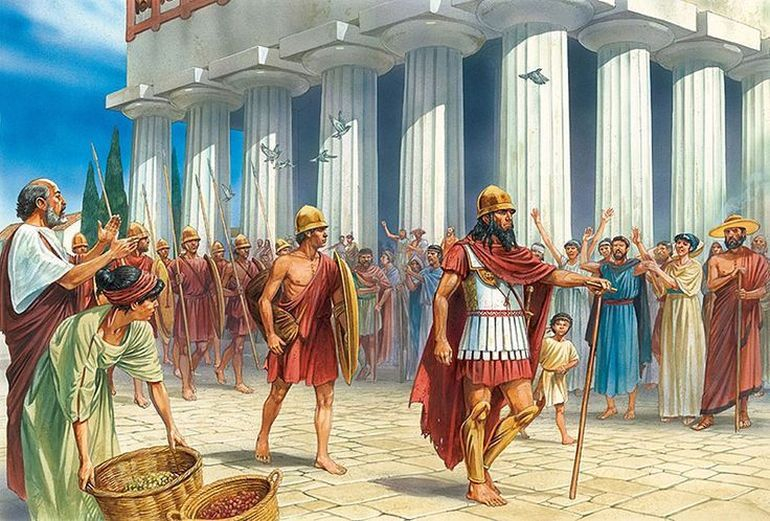
https://www.pinterest.com/ -
One of Ancient Greece's most well-known manifestations of its influence and dominance in the ancient world was the Library of Alexandria. Scholars from all over the world flocked to the Alexandria Library to browse the books and scrolls of antiquity.
The knowledge that Alexander the Great had amassed during his career of conquest and exploration persisted after his death in 323 BCE. It inspired a movement to exchange and preserve knowledge on a much larger scale than had previously been done. Demetrius of Phaleron, a disgraced Athenian politician who later served as the advisor to King Ptolemy I Soter, was instrumental in the creation of the library.
Between 200,000 and almost a million original manuscripts, according to estimates, were gathered from all over the world and kept in this knowledge center until it was destroyed in 48 BC. Many times, the Muslim Army has been held responsible for the precise cause of the Library of Alexandria's fire. Actually, though, it was just a wartime mishap. Julius Caesar supported Cleopatra when the Egyptian civil war broke out between her and her brother Ptolemy XIII. As a result, Ptolemy and his army besieged him in the vast harbor. The Library of Alexandria and its hundreds of thousands of ancient writings, nearly all of which are now lost forever, were destroyed as a result of Caesar and his forces destroying portions of the harbor and igniting a fire that later spread throughout the area.
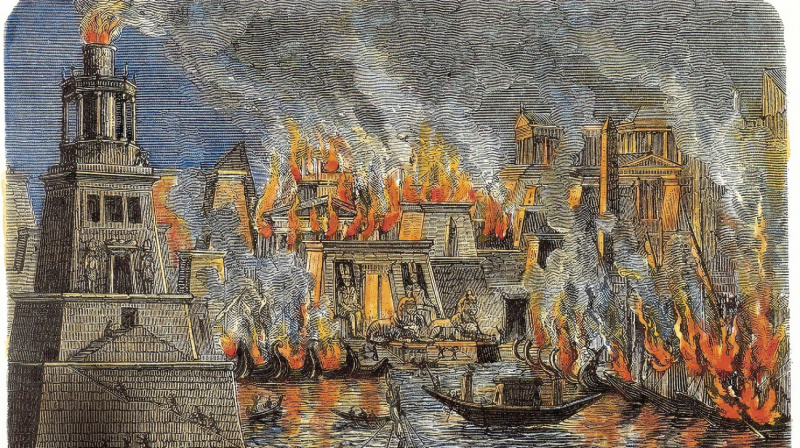
https://www.sciencephoto.com/ 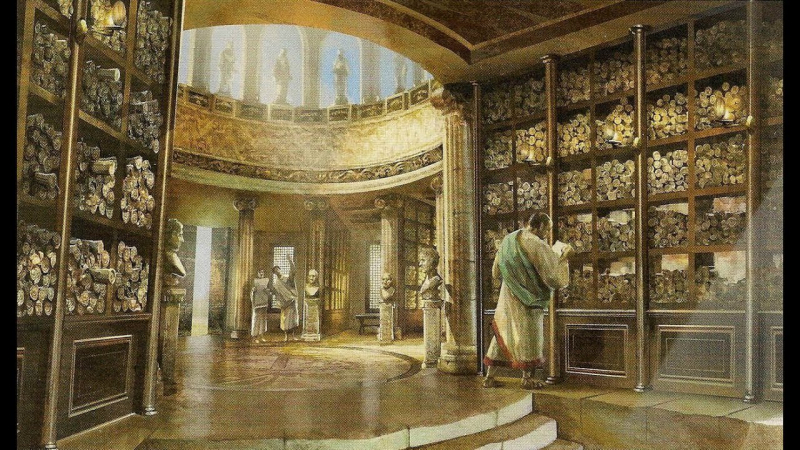
https://brewminate.com -
The majority of people became aware of Leonidas and the 300 men because to Zack Snyder's 2006 movie 300. Unsurprisingly, there are certain inaccuracies in the movie's account of the Battle of Thermopylae in 480 BCE during the Persian Wars. The same is true of the graphic novel on which the movie is based.
According to tradition, Leonidas and 300 Spartans defeated Xerxes I of Persia's army on their own. The truth, however, is more complex because it provides more context for how they arrived there, how accurate the statistics were, and, of course, the whole "the Spartans fought alone" thing. King Xerxes I deployed a massive army—between 70,000 and 300,000 soldiers—to advance from the south at the start of the Greco-Persian Wars.
Only 6,000 to 7,000 troops from Leonidas' much smaller army accompanied him into combat. Along with his 300 Spartans, his army also included Greek soldiers from several city-states. For three days, the far weaker army held off the Persians till a treachery gave Xerxes the upper hand.
Greek national Ephialtes betrayed both his nation and the army by revealing Xerxes the route around Thermopylae. Even a portion of the Persian army was led by him along the way. Part of the Greek Army was decimated by the Persians, which forced a retreat. But Leonidas remained and fought on with 300 of his bodyguards, a few helots, and 1,100 Boeatians. A withdrawal would go against Spartan traditions and regulations.
There has never been total agreement on the specifics of the conflict. The majority of people think that despite their valiant efforts, Leonidas and his army were finally defeated by a far greater Persian invasion. However, some people think there were survivors, and some even think Leonidas was one of them. Unfortunately, neither idea has been proven beyond a reasonable doubt.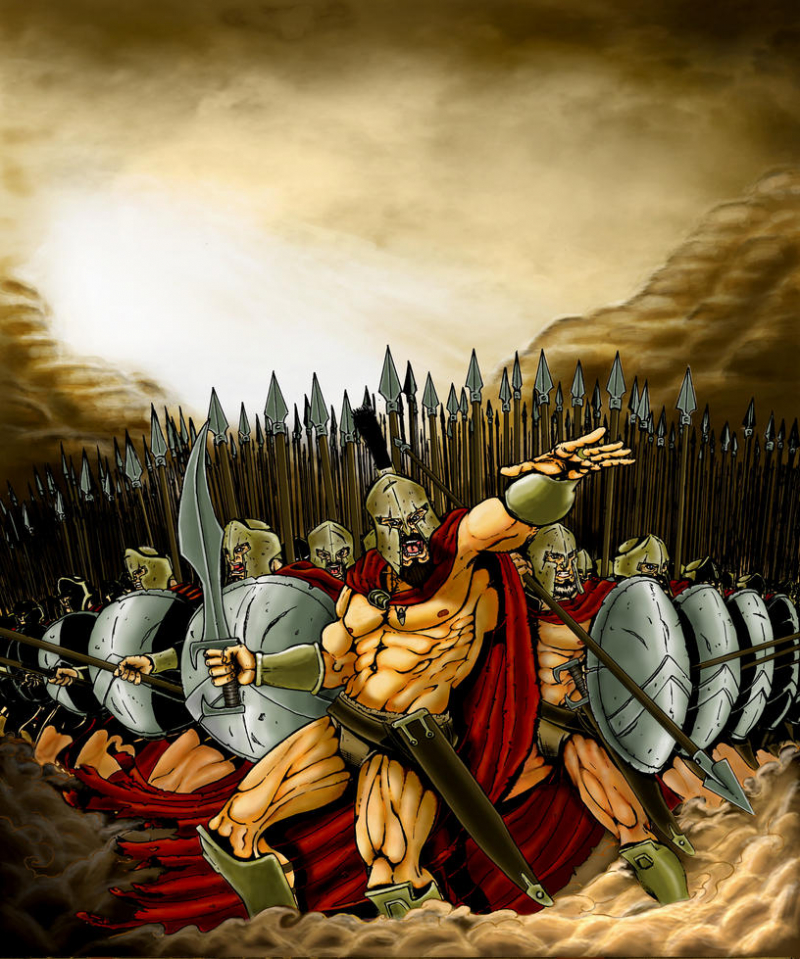
https://artofjustaman.deviantart.com/ 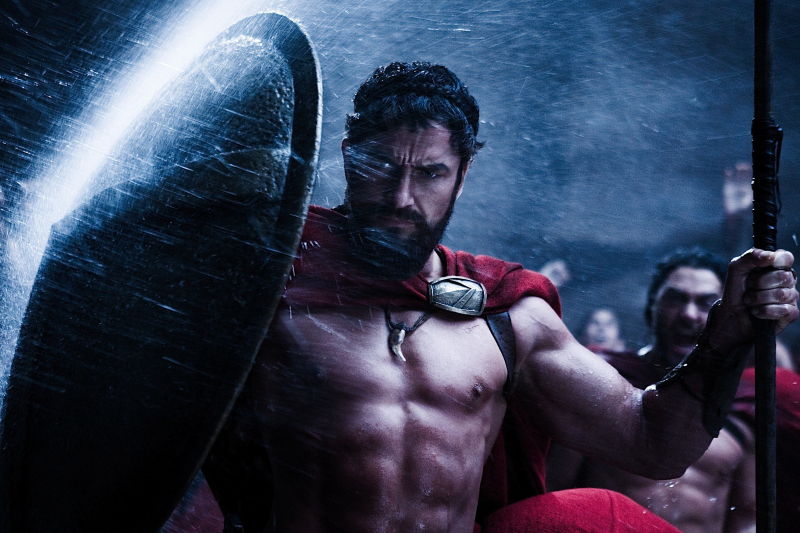
http://wallup.net -
The Trojan War is a subject of considerable discussion. The majority of people are familiar with this conflict, which involved Troy in western Anatolia and the Ancient Greeks. We are all familiar with the fabled Trojan Horse, which was given to the inhabitants of Troy as a ruse to lure Greek soldiers past the city's defenses. The Greek army then wiped out the city, slaughtering the men and capturing the women. There is only one issue: we are not certain that any of this actually took place.
This tale was long considered as fact rather than a myth or a legend. The truth is that we don't have any proof that the Trojan War, the wooden horse, or pretty much anything else associated with this mythical tale even happened. Only because it is commemorated in old Greek plays and writings like Homer's Odyssey and Iliad do we even know about the legend. It later found its way into Romantic literature, such as Virgil's Aeneid. Although Troy's ruins may still be found in Anatolia, there is still controversy over whether the city described by Homer is the same one, as well as if a war actually broke out in the first place.
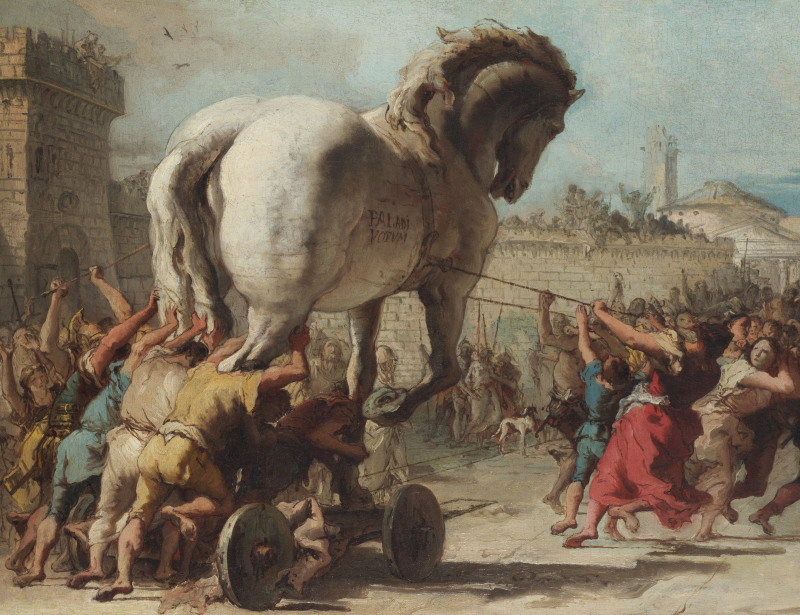
https://quizizz.com/ 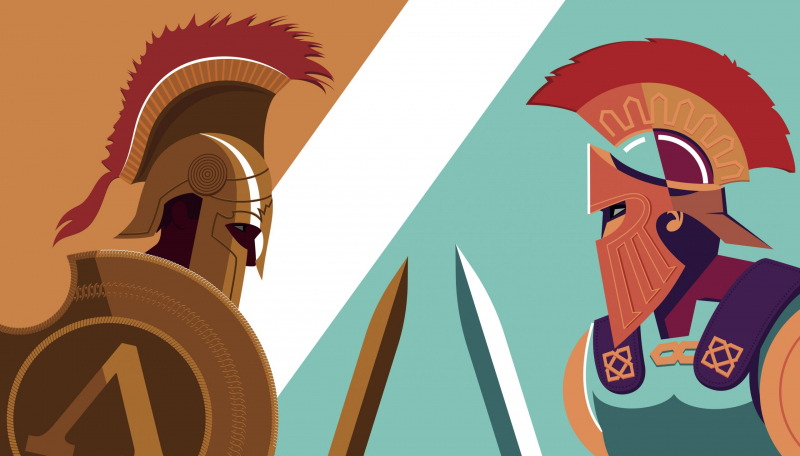
https://www.greekboston.com/ -
Athens hosted the first modern international Olympic Games in 1896, which was appropriate given that they had previously been held there for more than a thousand years. We just presume that some elements of the Olympic Games have been there for a long time. We have always assumed that the lighting of the Olympic torch is an old custom given the lengthy history of the games. Not at all.
The first Olympic torch relay took place in Berlin in 1936, according to history. Plutarch's writings and ancient Greek artwork served as Dr. Carl Diem's inspiration for the Olympic torch, which has now become a tradition. Just three years before the Second World War started, Nazi Germany came up with the idea and funded it.
There were no Olympic Games conducted during World War II. The Olympic torch returned when competitions resumed in 1948, but this time it carried a different message: one of peace. It was traversed from ancient Olympia to London through a shattered Europe. The first torchbearer took the burning staff on the first leg of its trip while laying down his arms, taking off his army uniform, and starting the relay.
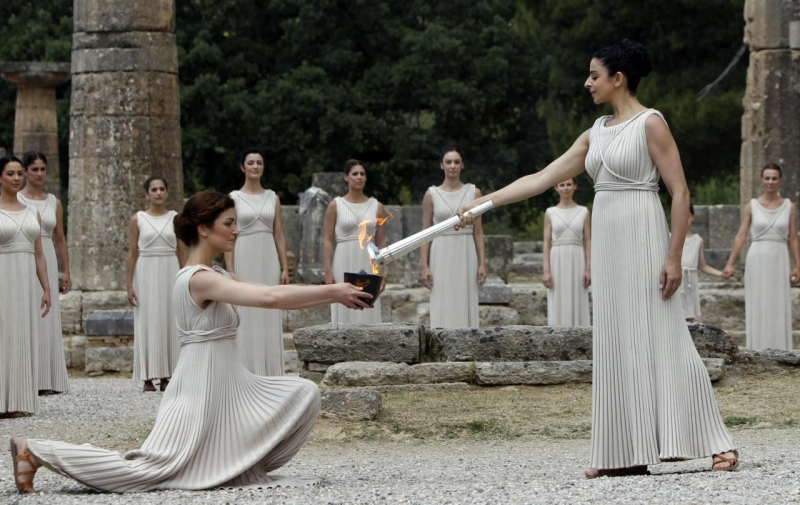
https://www.pinterest.fr/ 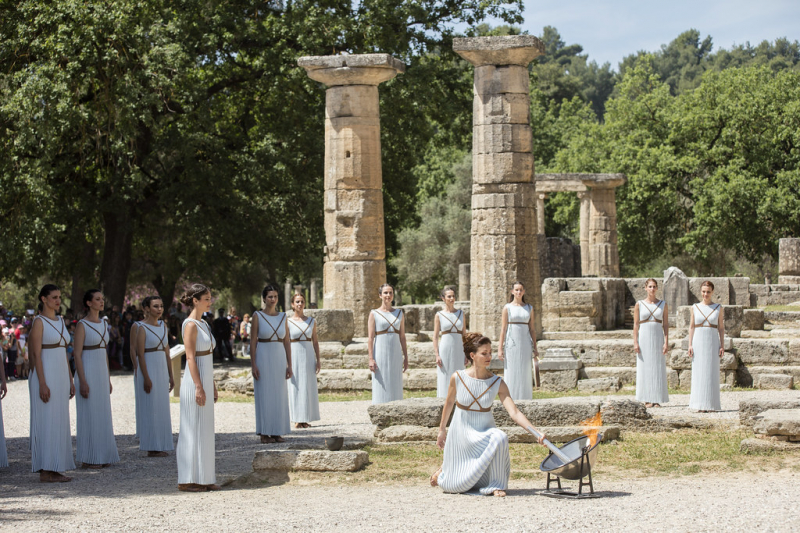
https://www.flickr.com -
The Ancient Greeks are responsible for a lot of things that the current world never seems to acknowledge. Ancient Greece is often associated with the Gods, battles, Spartans, and the amazing monuments they erected. Even while all of those things merit attention, we frequently and drastically undervalue their technological accomplishments.
Some of the greatest brains the world has ever known lived in ancient Greece. Everyday objects like alarm clocks, automated doors, central heating, and showers can all be linked to these great brains, from Plato to Archimedes, in some way. Plato's invention of the first alarm clock and Archimedes' development of the first steam cannon are two well-known examples of Greek technological advancements. The earliest lighthouse, located in Alexandria, as well as clock towers, weather stations, watermills, and other structures are all attributed to the Ancient Greeks.
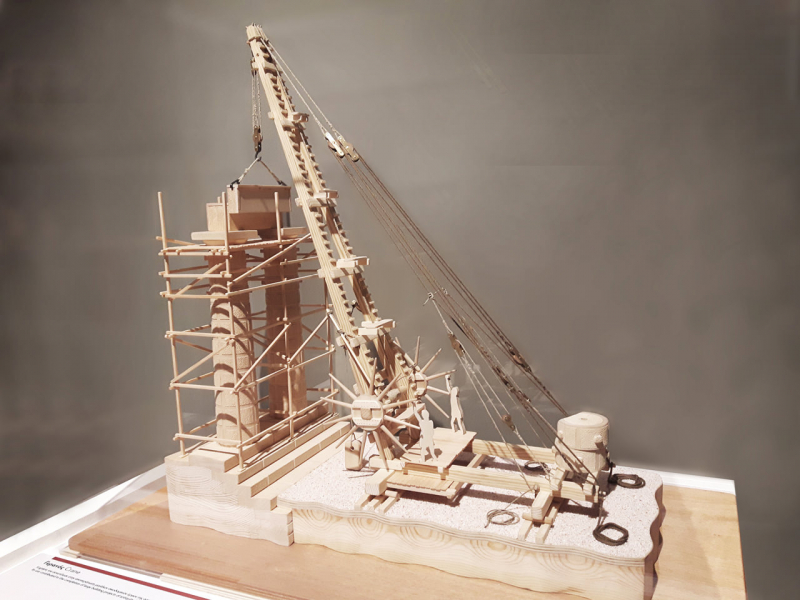
http://www.exhibitionsagency.com/ 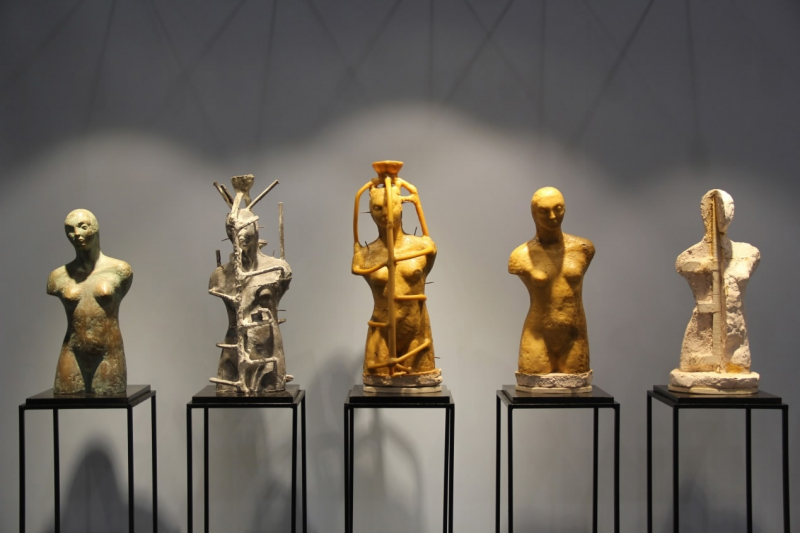
https://news.cgtn.com/ -
It was typical for young Greek boys to serve as apprentices to elder men in Ancient Greece. This applied to all of Ancient Greece, including Sparta, in addition to Athens. Their version of formal schooling was that. In Greek civilization, young boys had to complete apprenticeships to advance.
A mentor's and his mentee's relationship was subject to certain rules. To begin with, it only persisted until the mentee had a beard. The mentor was also in charge. The goal of these mentorships was to educate the young people about all facets of life, which occasionally included sex. The Greeks' relationship with sex was more about want, desire, or aphrodisia than it was about love.
An eromenos, or a submissive partner in homosexual partnerships, was the mentee. When the eromenos was prepared to integrate into Greek society as an adult would be decided by the mentor. If the adult avoided having sex with the young boy, it indicated the boy was prepared. However, the eromenos were expected to cooperate out of respect and appreciation if the mentor continued to engage them sexually. Although the laws differed from polis to polis, this was a frequent practice in Ancient Greece.
While many people today consider it to be an abuse of power, the ancient world did not share our perspective. Instead, it was merely a phase of boyhood for them. While many people today consider it to be an abuse of power, the ancient world did not share our perspective. Instead, it was merely a phase of boyhood for them. The Greek culture had diverse attitudes around sex. Therefore, despite the fact that some parts of pederasty were disapproved of, it was nonetheless widespread at the time.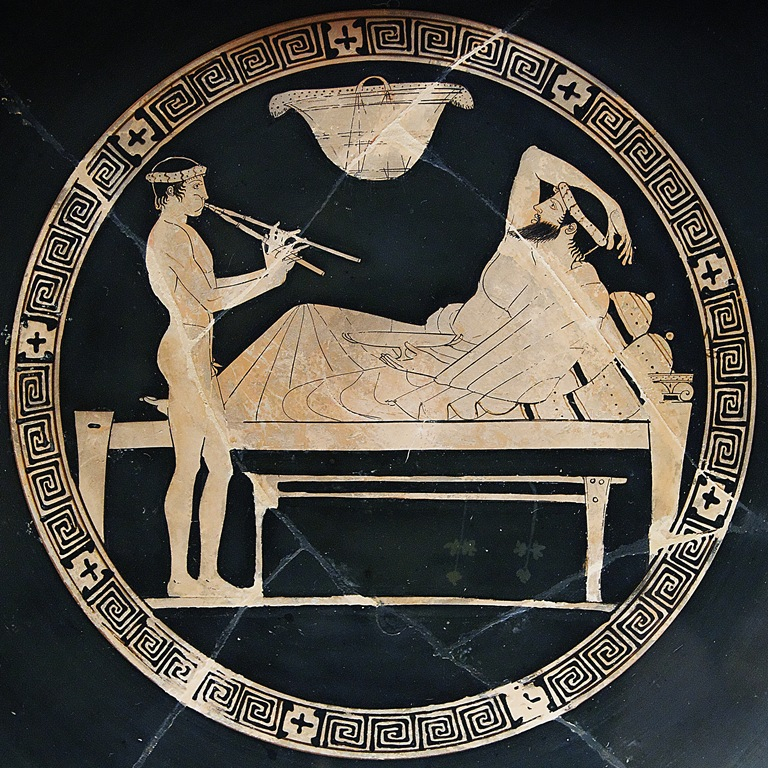
https://www.theliberalspirit.com 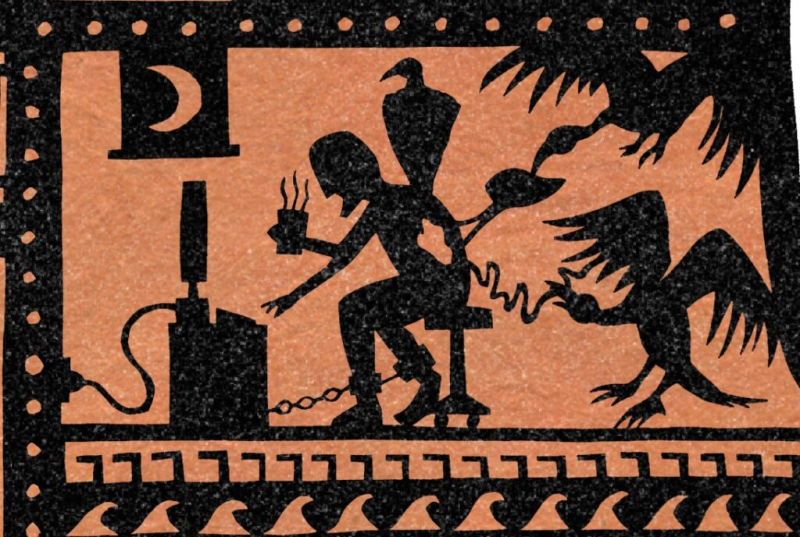
https://www.currentaffairs.org/ -
We frequently misunderstand the Spartans. Given all we're told and shown about the legendary Greek soldiers who fought the Athenian army, it makes sense. However, the fact that we know so little about Spartans accounts for a significant portion of the misconceptions we have about them.
It has been established that we were mistaken about certain important details regarding these famous warriors. To begin with, Sparta was not the name of a Greek city-state in the ancient world. Instead, the Spartans were based at Lacedaemon. The martial society of Sparta expanded during the Peloponnesian War, which took place during 431-404 BC, and confronted rival city-state Athens. Their culture was based on allegiance to the state and early military duty.
Spartan boys started their training and state-sponsored education as early as age seven. They learned what it meant to be a Spartan, which involved comprehending loyalty to one's country, tenacity, and discipline. Any fit man might join the Spartan army.
The relationship between the Spartans and the rest of Greece was possibly the most common misperception about them. Even though Greece's union took a while, the Spartans were not as much of a hero for the Greek cause as we have been led to believe. Due to their opposition to democracy, they declined to join the all-Greek alliance before the Greco-Persian War. They were brave soldiers who ultimately fought alongside the Greeks, but they were not the unflappable heroes that have been painted as such.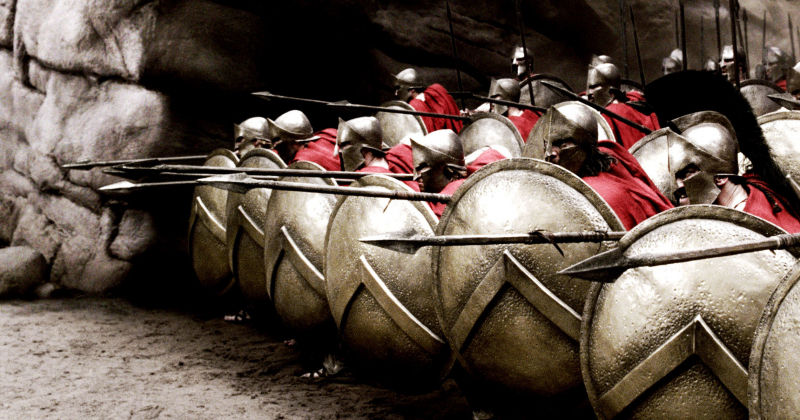
https://www.wired.com/ 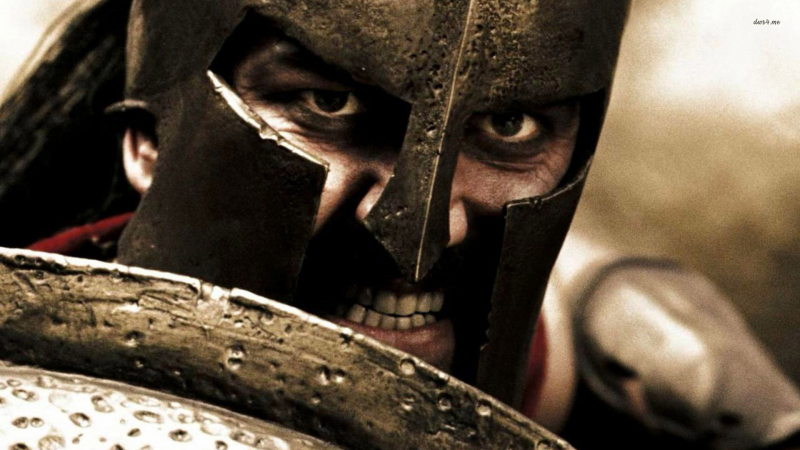
http://getwallpapers.com/ -
Greek statues and spectacular constructions like the Parthenon, the Temple of Zeus, and many other Greek temples were portrayed as being devoid of color, which led to the misperception about the Greeks and color. Marble was a favorite of the Ancient Greeks, who frequently used it as their first choice of building material. Pentelic marble was used in the construction of iconic structures like the Parthenon, which is still standing today. The majority of temples and statues would be made of a combination of wood, carved masonry, native stone, tufa, marble, and limestone.
For decades, our understanding of the colors used in Greek statues and architecture was erroneous. We thought that everything the Greeks built, most of which was made of pure white marble, was an architectural and design masterpiece. Despite popular belief, the Ancient Greeks did not dislike color. This dispels a common misconception. Not only were their statues painted, but their structures also contained splashes of color, such as the Parthenon and other temples. The colors weren't flat either.
The vivid hues that the Ancient Greeks favored most were purple, crimson, yellow, and white. It's crucial to remember that their classifications of these colors were different from those we use now. Red, for instance, may have been anything from orange to purple to the Ancient Greeks. Our knowledge of the Greeks' connection with color was mostly based on old structures and statues whose paint had worn off after being buried or hidden for many years.
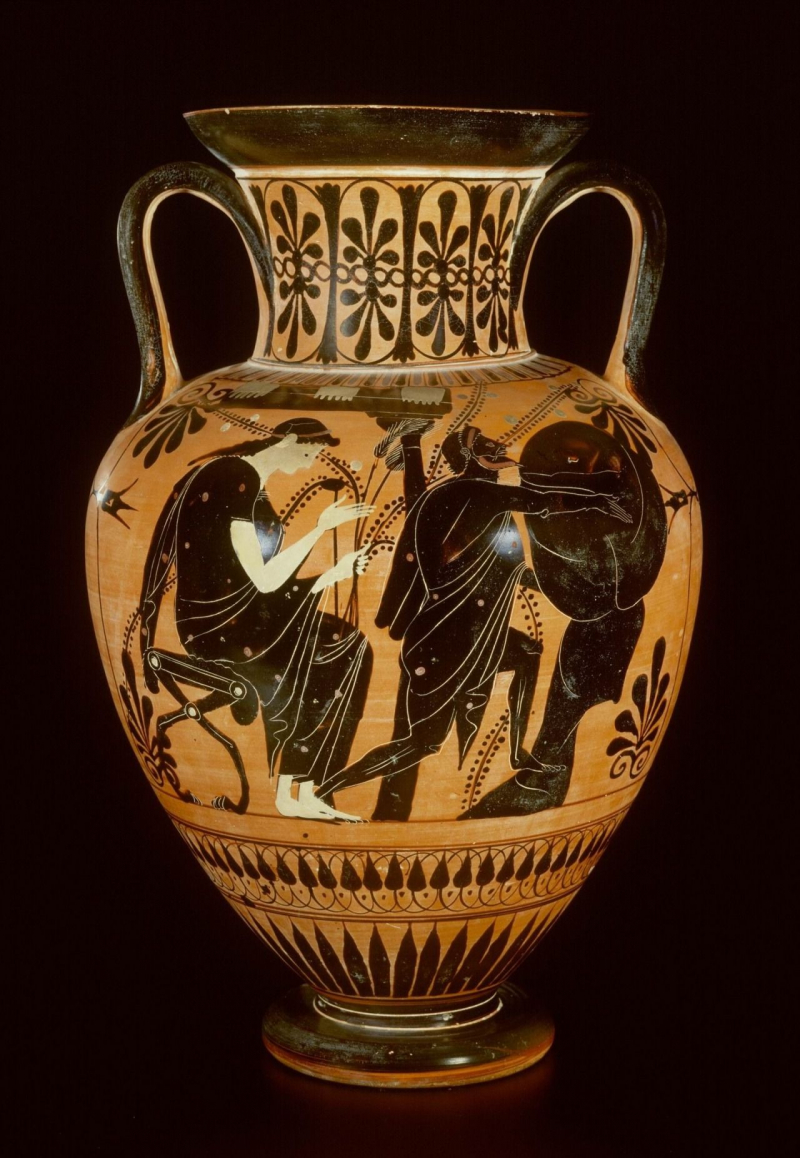
https://www.pinterest.es/ 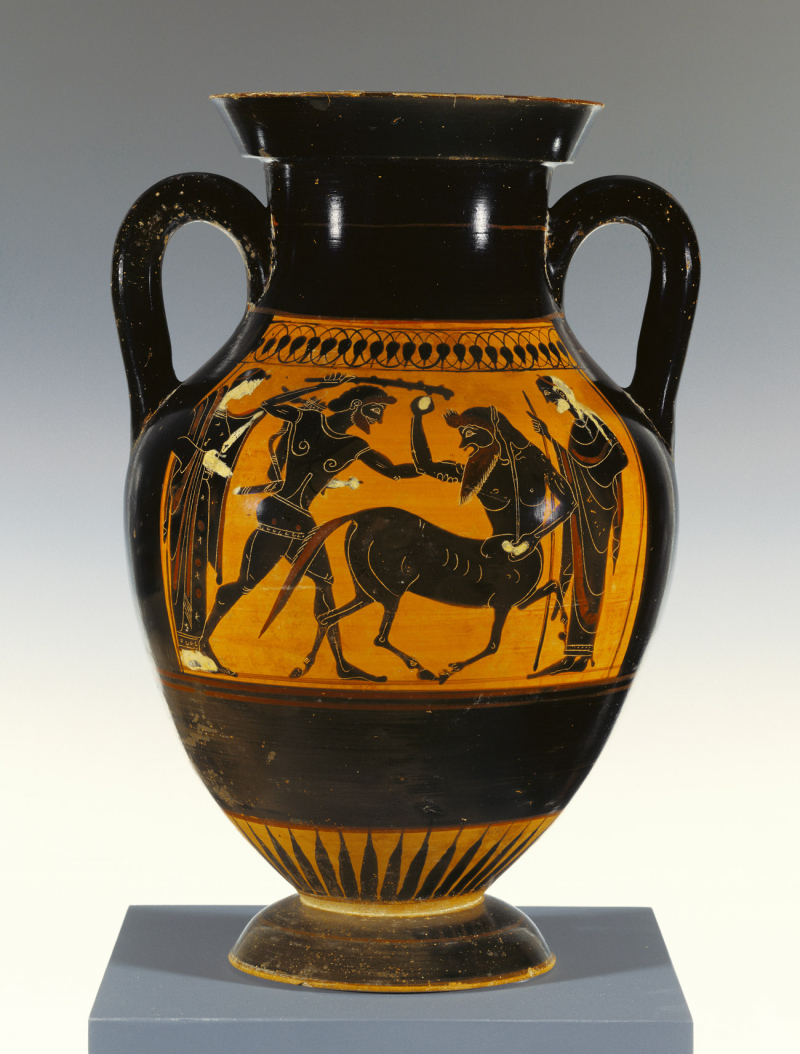
http://blogs.getty.edu/ -
The nation of Greece is covered with rivers, mountains, and rolling hills, which served as natural barriers between the different city-states that flourished. Greece as it is today is a largely cohesive country. However, the contrary was nearly universally true in ancient Greece. The polis, or group of independent city-states that made up ancient Greece, were united by nearly identical ideas, languages, lifestyles, and cultures.
Beyond these common lifestyles and beliefs, these city-states didn't have many ties to one another. Even the strongest examples of "affiliation" were transient or had highly ambiguous definitions. Since each polis was run differently, there was no real uniformity. While some poleis adopted the Athens-originating democratic system, others adopted more conventional forms of government including oligarchy, aristocracy, and tyranny.
In Greece, an imbalance of power frequently resulted in certain city-states assuming greater importance and dominating nearby, marginally weaker city-states. The Persian Wars, which took place between 492-449 BC, were one example of an ongoing battle that often caused unification among the city-states.
Greece was originally a peninsula, but after Alexander the Great died, it was transformed into a country. He is credited with promoting Greek language, art, culture, and urban planning, which gradually contributed to a more cohesive country.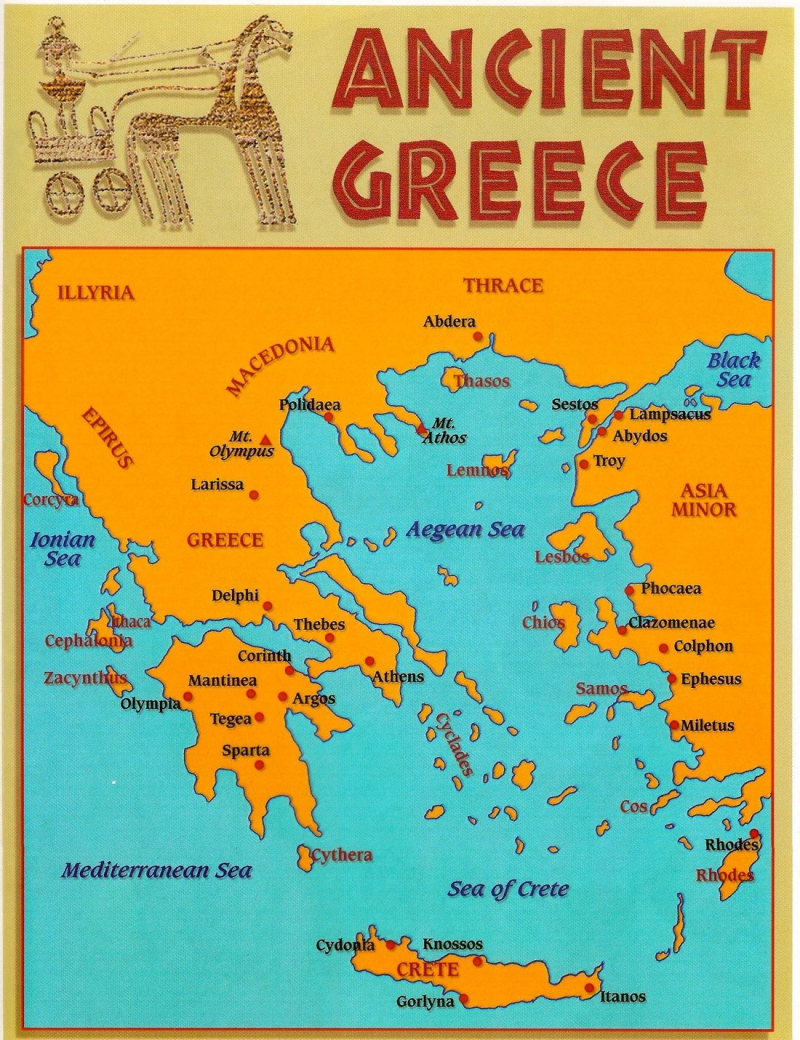
https://www.pinterest.co.uk/ 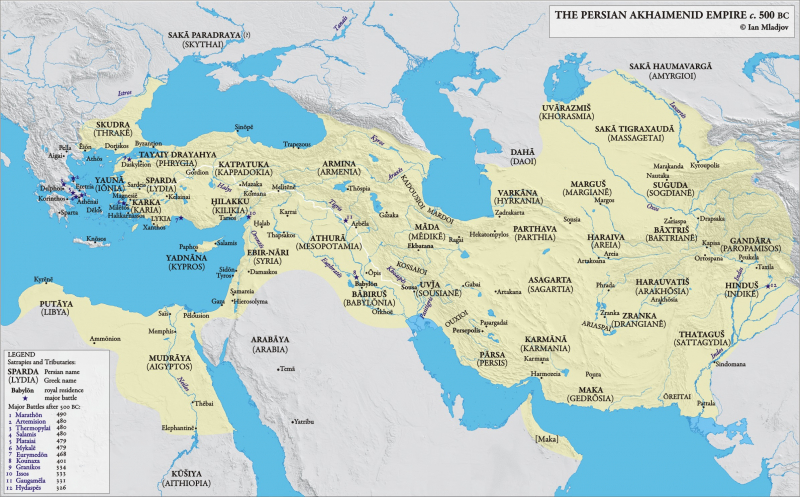
https://forums.sufficientvelocity.com













